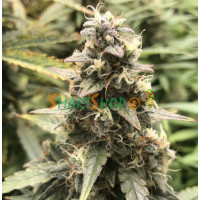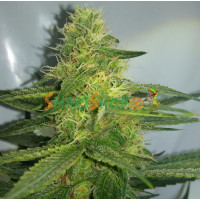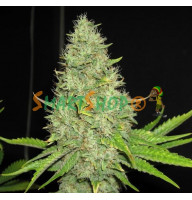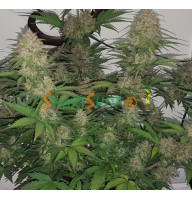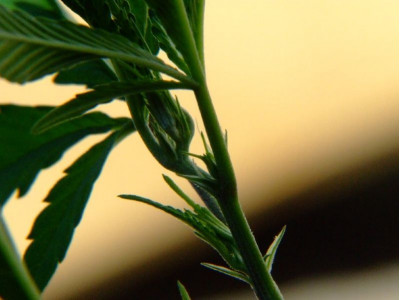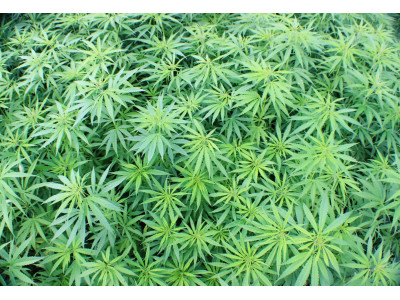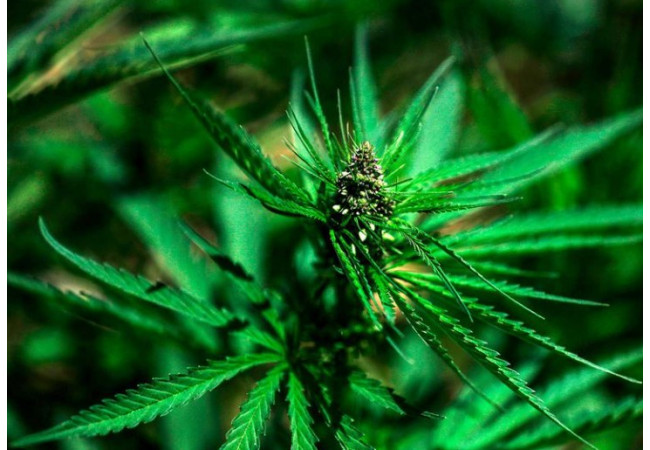
Sometimes so-called “white crows” may appear in orderly rows of identical cannabis bushes. At the same time, some may be literally “white” - such bushes show signs of albinism. Growing cannabis doesn't always follow the textbook path. Sometimes there are plants with a non-standard, but noticeable appearance: leaves shaped like “duck’s feet”, several plants from the same seed, and many others.
Mutations in marijuana are quite rare. The appearance of these signs can be compared to a lottery ticket. Due to a genetic failure, the bushes cannot develop well. In quite rare situations, a mutation can provide some advantages - a huge garden bed with one seed and so on.
Types of cannabis mutations: TOP 6 most common
To protect themselves from potential mutation, growers always choose to buy hemp seeds from trusted suppliers of quality raw materials. Please note that growing marijuana in Ukraine is strictly prohibited by law. The information in this article is presented for informational purposes only.
Among all the probable mutations of cannabis, 6 types are most common:
No. 1: Albino Bush
Genes are responsible for the production of chlorophyll, a special substance involved in photosynthesis. If its production is disrupted, the stems and leaves lose their green color - they turn white. The lack of green coloration also indicates that the cannabis plant is no longer able to absorb carbon dioxide from the atmosphere.
No. 2: Duck feet
In this situation, fused membranous leaves appear on the plant, similar in shape to crow's feet. This mutation is associated with a recessive gene, which means that the seeds often produce bushes with ordinary leaves. At the same time, crow's feet do not in any way affect the yield and other properties of the plant. Some breeders specifically bred a resistant variety with fused leaves.
No. 3: Polyploidy: increased number of chromosomes
Traditionally, marijuana has 10 pairs of chromosomes (20 pieces). But in the case of this mutation, the number of chromosomes in a cell can be 30, 40 or more. The presented phenomenon is very interesting to breeders, since bushes with a large number of genes above the norm are often larger and more productive.
No. 4: One seed for the whole bed
This mutation in selection is called polyembryony - in this case, 2 or more bushes grow from 1 seed. In the animal world there are similar cases - the birth of twins. In genetic terms, these plants are completely identical and face only one main development problem - competition (this happens if the bushes are not planted at the very beginning of their life).
No. 5: From one node there are 3 leaves at once
Most often, 2 leaves grow from one marijuana node. If the presented type of mutation appears, then the number of leaves will increase to 3 or even more. Cannabis in this situation becomes more bushy, but most often, when the 5th node appears on the shoot, everything returns back to normal.
No. 6: Formation of inflorescences at the base of leaves
The healthy location of the inflorescences is at the node where the leaf petiole diverges from the main stem. But in this situation, everything happens in a different way - the formation of small side inflorescences occurs at the second end of the petiole, from where the “fingers” of the leaf grow. Here the flower leaves can be preserved, but if abnormal leaves appear, they need to be removed.
In conclusion, it is also worth noting that genetic mutations in cannabis are an evolutionary tool. Sometimes they can be a good reason to get rid of a bush, since it may be prone to hermaphroditism or may not be viable. Also, some growers are not at all opposed to admiring this miracle of nature.

